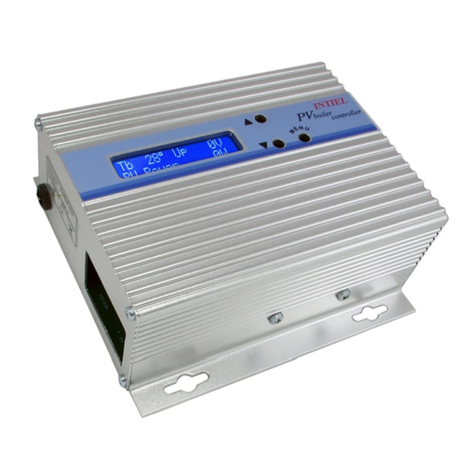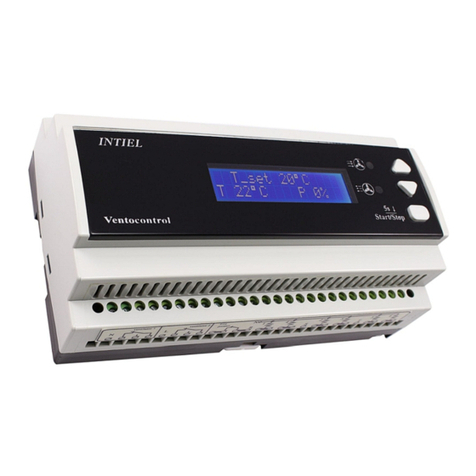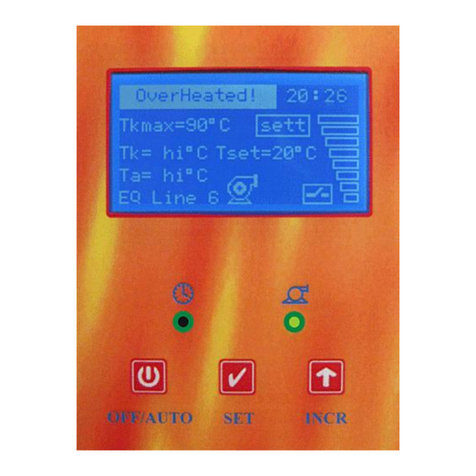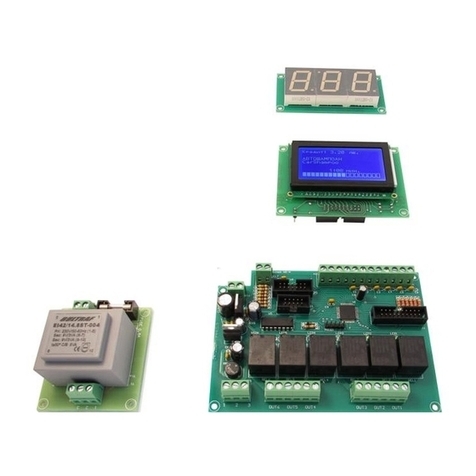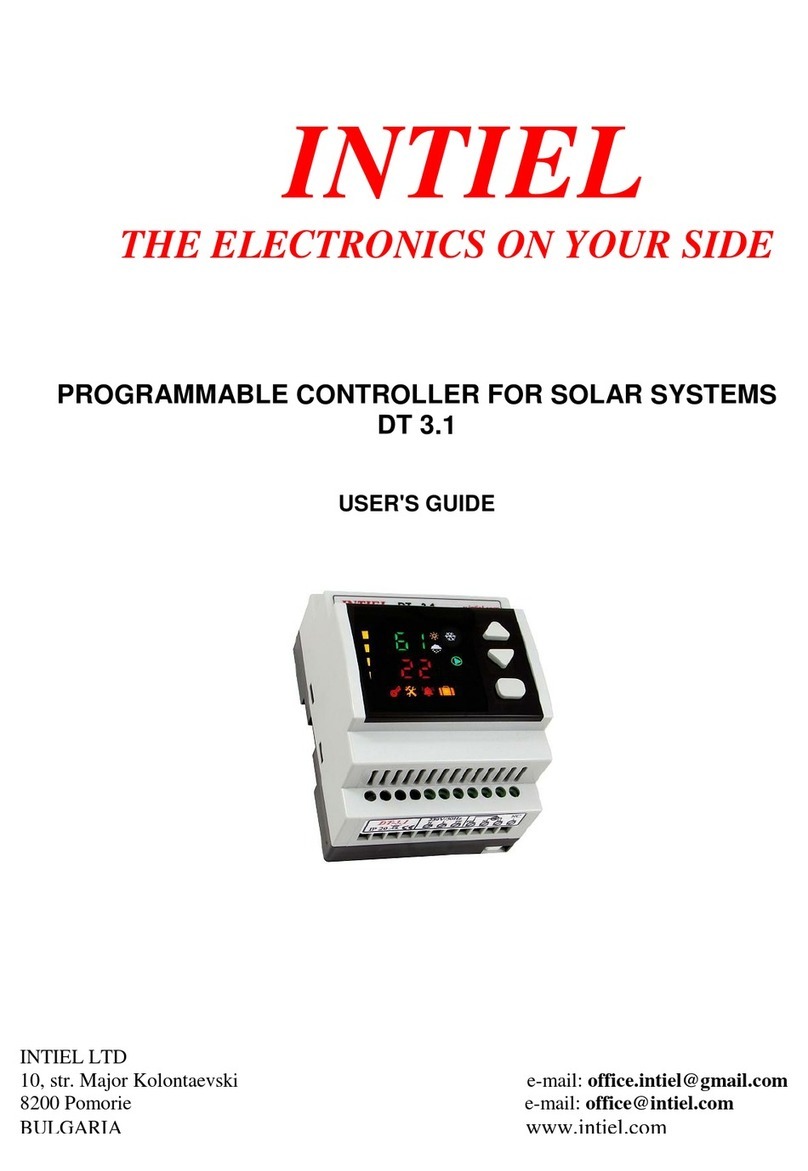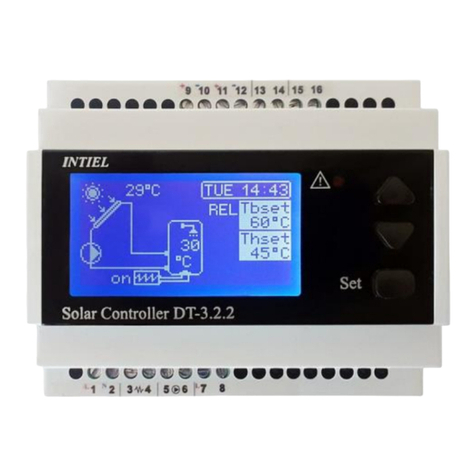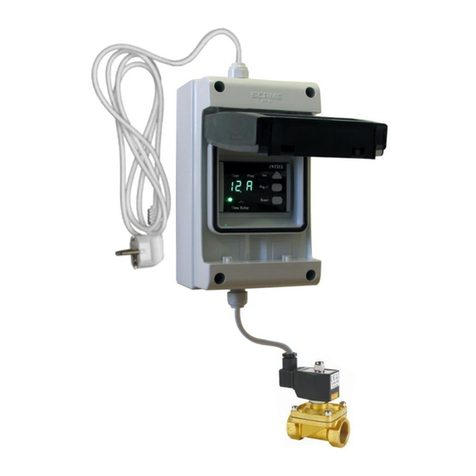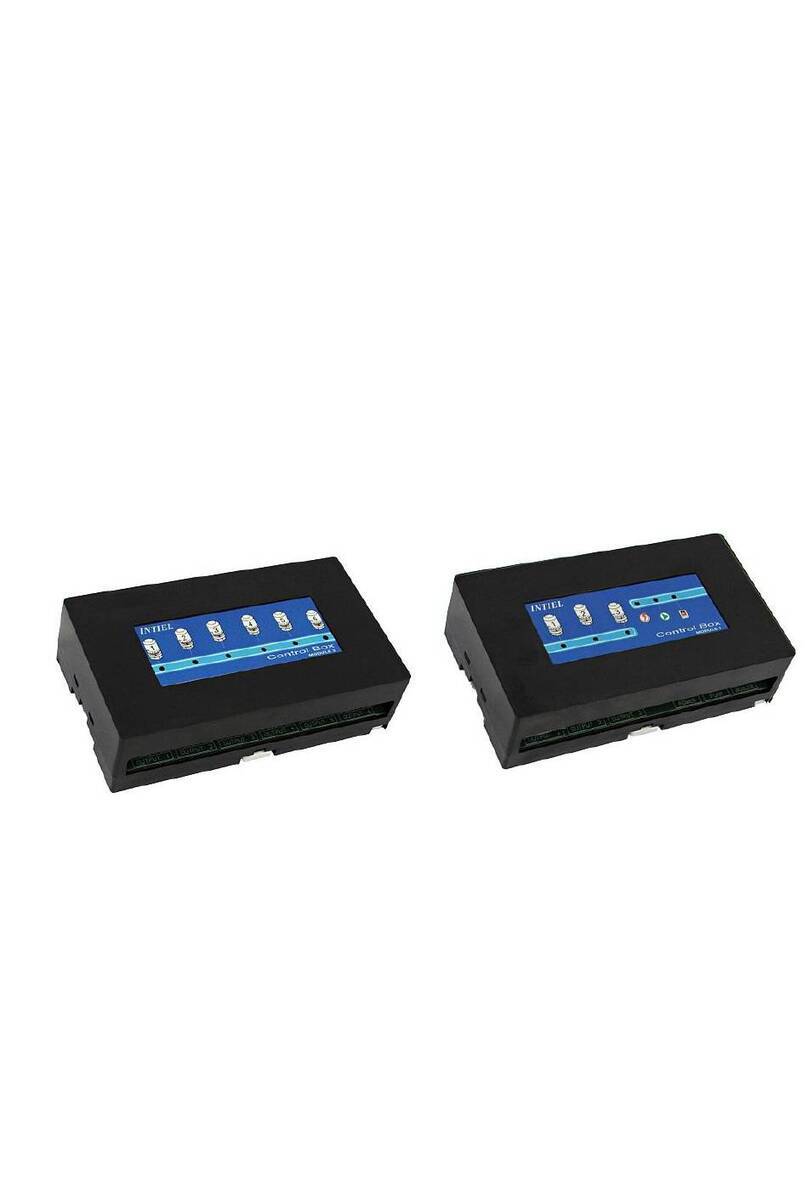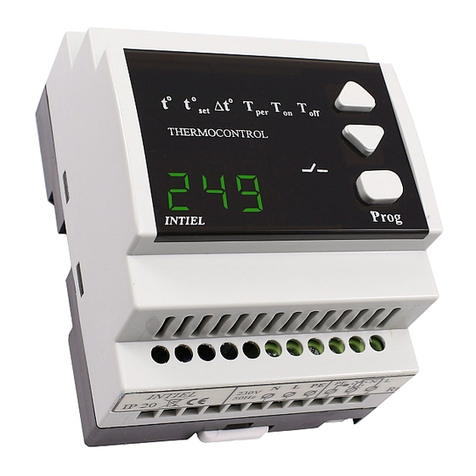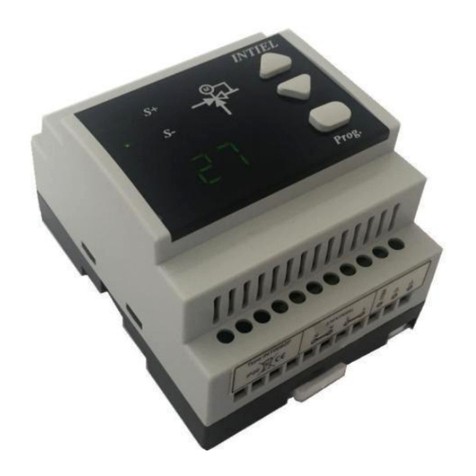The mixed valve cannot be open by the Controller at systems with a bad gravitational
circulation in the small boiler circuit, because of low temperature of the return boiler water.
The indicator 6 (figure 3a) signalizes for low temperature return water. The decision about
such a situation is an additionally decreasing of the assigned minimal level of the return
water, even that will increase the low temperature condensation; or by increasing the boiler
temperature by means of the operation thermostat about 1st burner stage; or by turning the
mixed valve at 1800that will release the circulation in the small boiler circuit to the heating
one by means of circulation pump P2. In order to obtain the above-mentioned the servo-
actuator and the mixed valve lever have to be dismantled, as the valve is to be turned at 1800.
It is not necessary the water in the heating systems to be drawn out. Generally all above
mentioned relates to heating systems with gravitation circulation in the small boiler circuit
and with an installed circulation pump at the heating circuit.
1.5.3 Temperature sensor of the heating water “O”
The temperature sensor “O”is to be mounted on the pipe after the mixed valve. Its
main function is to measure the inlet temperature of the heating water circuit. The
recommended sensor location is as much as far from the mixed valve. In fact the best location
is after the circulation pump P2 (Figure 1).
Sensor “O” provides an optimum heating comfort in the premises by uniform heating
during the time and it does not permit a drop of the heating water temperature bellow the
assigned level. The assigned heating water temperature can be constant or it can be defined in
relation to the outdoor temperature. Thus, there is no cooling of the radiators during
penetrating of a cold air through the windows towards the floor. If such function is not
available, the programming of not estimated room temperature drops will cause substantial
cooling of the water in the heating system. As a result of that the whole heating system and
the heating premises will get cold. Secondary heating of the system, up to desired temperature
comfort is an energy-waste and needs more time. That effect becomes stronger with
increasing the water contents in the heating system.
The heating water temperature is being regulated within 15 - 85 С, never mind the
regulation of the system is provided by outdoor temperature (equi-thermal regulation) or by a
room thermostat.
Sensor “O” prevents water heating in the second circuit above the maximum assigned
level, which is recommended to be 50 Сconcerning under-floor systems. That could be fixed
by submenu “SETTINGS” (see point 1.4)
1.5.4. Water tank temperature sensor “B”
Sensor B is to be mounted in the water tank at a place, recommended by the tank producer. It
sends a signal to the Controller about what thank heating if the following conditions have been
fulfilled:
-the water tank temperature is lower than assigned one Tbset,
-the outlet boiler temperature is grater than the one in the water tank;
-the return boiler temperature is not lower than the assigned one Trset,
Then the Controller starts the circulation in the water tank circuit by means of closing the
contact between terminals X6 (see point 2.3.2.). In case the water tank temperature exceeds
the assigned one Tbset, then the circulation in the water tank circuit is to be stopped. In case
the contact between terminals X6 is not closed, so the circulation in the water tank circuit is
not being switched on, even when the water tank temperature is cooler than the assigned one.
1.5.5. Outdoor temperature sensor “A”
